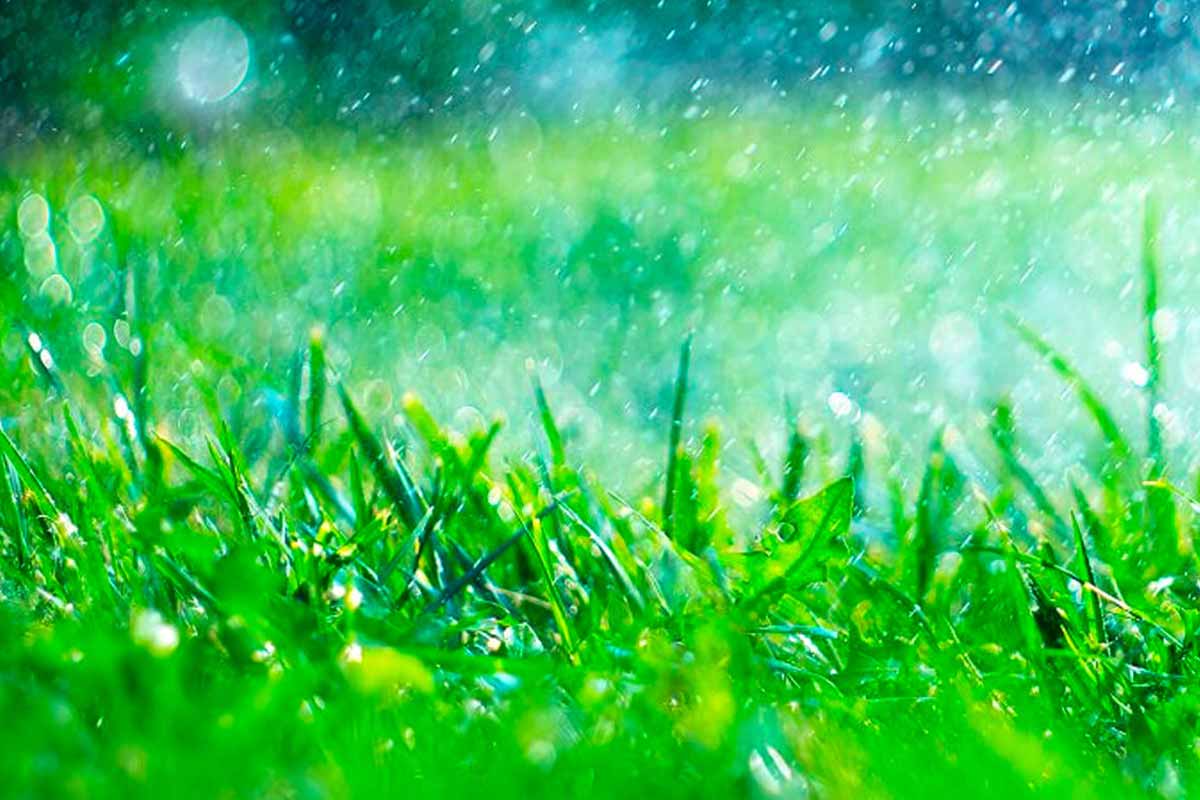Rain on the horizon and the mower still parked? Timing your cut decides how clean the finish looks, how fast the grass recovers, and how much work follows. A quick pass before showers often saves hours later, because wet blades clog equipment and bruise turf. Plan the window, then check ground feel. With a light step on the soil, you’ll know if your Lawn is safe to mow or better left to dry.
Why Cutting Wet Grass Backfires
Wet leaves bend instead of slicing cleanly, so the cut frays and turns brown. Clippings mat in clumps, and the deck gums up fast. The wheel path imprints the surface, and the Lawn looks patchy even when height seems even. Cleanup takes longer than the mow.
Saturated ground also compacts beneath mower weight, which eliminates air pockets roots require. Those ruts fail to disappear independently, so you eventually topdress, level, and reseed. Since recovery consumes weekends, preventing rutting safeguards both turf vigor and your schedule.
Moist leaves invite disease while humidity lingers after rainfall. As blades stay wet, fungal spores spread with every pass. You’ll see matted spots, dollar spot halos, and faster thatch buildup. Since airflow dips low near the soil, lingering moisture keeps pathogens active and pushes stress across the yard.
How Rain Timing Shapes Lawn Health
Dry conditions give the cleanest cut, so aim mid-morning after dew lifts. Sharp blades shear rather than tear, while a steady pace avoids scalping. Because growth surges after rain, keep the one-third rule firm. Your Lawn copes better when you trim modestly and keep the canopy shading crowns.
A light shower right after mowing acts like a reset button. Natural water cools the canopy, carries clippings deeper, and helps leaf tips heal. Since heat and cutting both stress plants, a gentle soak reduces wilt and restores turgor, so color holds and growth resumes without shock.
When grass already stands tall, a pre-storm pass prevents big leaps in height. After a good soak, stems stretch fast, and the mower struggles with bulk. You might schedule a follow-up once conditions dry. With height controlled first, the second pass refines texture without tearing tender tips.
Safety, Traction, and Cut Quality After Rain
If life intrudes and the window closes, patience protects turf and ankles. After a light shower, wait at least 24 hours; after several days of rain, wait longer. Your Lawn tells the truth underfoot, so use feel, not just the forecast, before starting the engine.
Walk the yard and watch your shoes. When soil feels soft or marshy, or when soles come up wet, hold off. That simple test prevents wheel ruts, preserves structure, and saves seed later. Because soil needs oxygen, letting pores reopen makes roots stronger for the next growth push.
Even when the surface looks dry, hidden moisture can clog the deck. Mulchers smear rather than mince, so keep the chute clear, raise the deck a notch, and bag only if clumps appear. As blades dull faster in sticky conditions, sharpen often to keep edges crisp and stress low.
After The Storm: Lawn Recovery And Growth
Mowing inflicts minor stress every time, and heat magnifies it. Right after a pass, rain helps tissues seal and rebounds color. As water cools leaves and feeds roots, the Lawn bounces back faster, so density holds, and thin spots do not widen into bare patches.
Height still rules. Keep that one-third limit, because deep cuts scalp crowns and stall growth. A mid-morning schedule works well after dew dries, and a measured pace avoids tugging stems. With sharp blades and a set deck, the surface looks even and the texture stays soft underfoot.
If wheels left lines earlier in the season, repair them when soils firm. Brush up fibers, fill with screened topsoil, and reseed the stripe. Since repeated passes deepen grooves, vary mowing patterns weekly. As the ground dries, weight spreads better, and the surface returns to a smooth plane.
Practical Schedule When Rain Is In The Forecast
Forecast calling for showers? Plan a pre-storm session, then prepare the gear. Clear the deck, check the blade, and set height before rolling out. A short, even trim holds through rain, while your Lawn avoids clumps, wheel marks, and the slow cleanup that soggy turf demands later.
Missed the chance? No panic. After a single light shower, that 24-hour wait usually suffices. When rain lingers for days, stretch the delay, since free water sits in the root zone. Because traction matters as much as height, a patient gap keeps footing sure and the cut line straight.
Before you restart, read the ground. A spongy feel signals trapped water; a firm crunch means it’s ready. Mowing only when conditions pass the foot test prevents disease spread and deck clogs. With timing on your side, equipment runs smoother, and the finish line looks clean and even.
A clear timing habit that protects turf and tools
Cut before rain whenever you can; the cut is cleaner, stress falls fast, and clumps stay away. If the clouds beat you, wait until the ground feels firm, about 24 hours after a light shower, and longer after prolonged rain. With a quick walk test, your lawn stays healthy, even, and easy to maintain.
